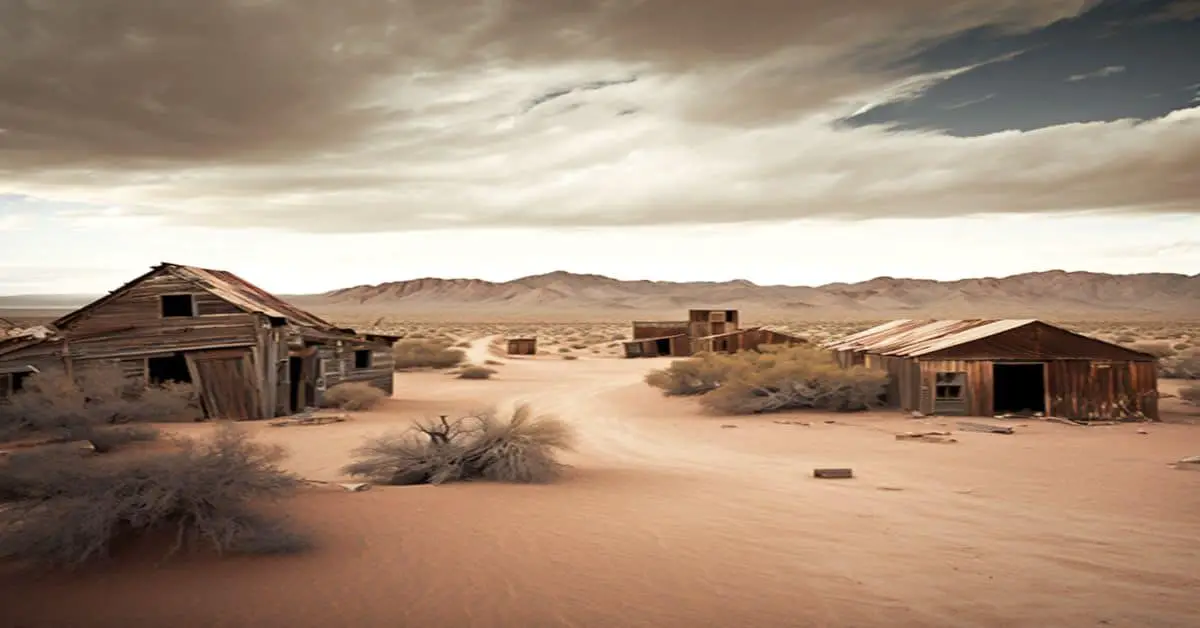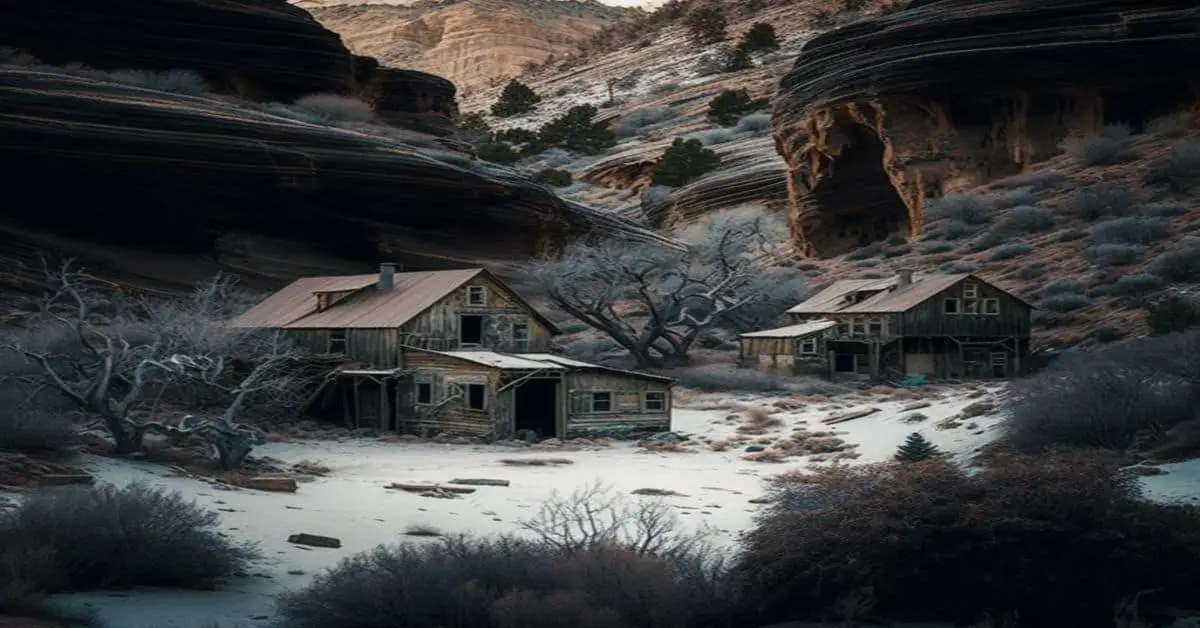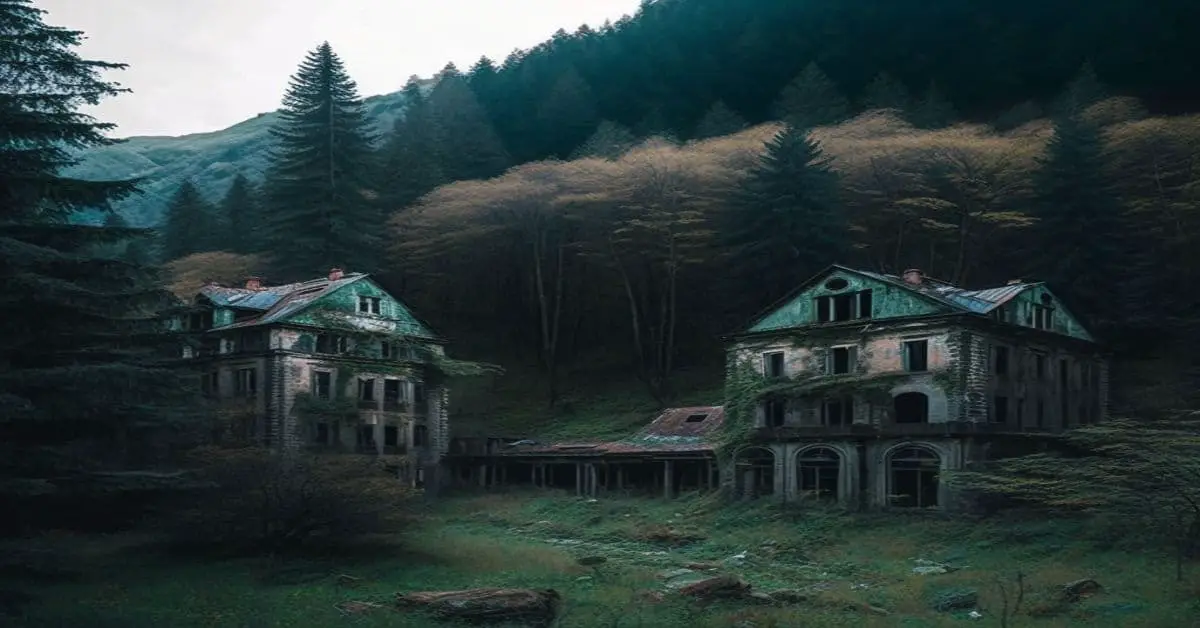Nestled in the foothills of California’s Amador County lies Drytown, a historic ghost town once a thriving hub during the state’s gold rush era.
Established in the mid-1800s, Drytown was plagued by a lack of water for mining and suffered multiple fires, leading to its eventual decline.
Today, the town stands as a testament to California’s rich gold rush heritage, with several well-preserved historic buildings and a cemetery filled with the town’s early settlers and pioneers.
Despite its diminutive population of just 47 residents, Drytown is a fascinating destination for history buffs and photographers alike.
The town’s LeMoine House and Hearst’s store are among the many well-preserved buildings that glimpse the town’s past.
Additionally, Drytown’s cemetery is a testament to the struggles and perseverance of the town’s early settlers, with many headstones bearing the names of families who played an integral role in shaping the town’s history.
Whether you’re interested in history, photography, or simply exploring off-the-beaten-track destinations, Drytown is a must-visit destination that offers a unique glimpse into California’s gold rush past.
Key Takeaways
- Drytown was established after the 1849 gold strike in Coloma, but most people left after the gold ran out.
- Despite suffering from multiple fires, several historic buildings from the 1850s still exist in Drytown, including the LeMoine House and the Hearst’s store.
- Drytown’s climate is hot in summer and cold in winter with occasional snow, but it can be visited anytime.
- Drytown is a subject of interest for historians and photographers, with over 100 original silver plate photos available for further information.
Location and Access
Drytown, a historic ghost town in California established after the 1849 gold strike in Coloma, is located in Amador County and can be accessed via 2WD roads. The town is situated in a hot and dry climate in the summer, with temperatures reaching up to 100 degrees Fahrenheit, while winters can be cold and occasionally snowy. Visitors should come prepared with appropriate clothing and gear for the weather conditions.
The roads leading to Drytown are suitable for 2WD vehicles, making it easily accessible for visitors. However, caution should be exercised when driving, as the roads can be narrow and winding in some areas. It is advisable to check weather conditions and road conditions before embarking on a trip to Drytown, especially during the winter months when snow and ice can make driving conditions hazardous.
History and Buildings
Placer mining in Drytown was challenging due to water scarcity, leading to the establishment of the ghost town after the gold rush in Coloma. Despite the difficulties, the town’s population grew rapidly, with buildings such as Hearst’s store, the butcher shop, fire bell, playhouse, and mineworks springing up. However, Drytown was plagued by multiple fires, which took a toll on the town’s development. Eventually, the gold ran out around 1860, causing most people to leave the area.
Today, the town’s historic buildings remind of what once was. The LeMoine House, built in 1857, is still maintained by the original family and located next to the old school. Meanwhile, Drytown includes a few buildings dating from the 1850s, including the oldest dwelling in Amador County, a plastered adobe home on Old Plymouth Road.
The LeMoine House restoration is a testament to the town’s commitment to preserving its past. Additionally, George Hearst, the father of William Randolph Hearst, is believed to have had his mine office in a brick building in Drytown, adding to the town’s rich history.
Residents and Interest
With a current population of only 47 residents, Drytown is a small and quiet community that has become a subject of interest for historians and photographers.
The town’s cemetery is one of the most fascinating places to visit, as it tells stories of the people who once lived in the town. Many of the graves date back to the 1800s and offer a glimpse into the lives of the town’s early settlers. The cemetery is also a popular spot for photographers, as the old headstones and monuments provide a unique and haunting backdrop for photos.
Aside from the cemetery, Drytown also offers plenty of photography opportunities for those interested in capturing the town’s historic buildings and streetscapes. Many of the buildings in the town date back to the 1800s and have been well-preserved, offering a glimpse into what life was like during the gold rush era.
Photographers can capture the rustic charm of the town’s old storefronts, the intricate details of the LeMoine House, and the crumbling ruins of the old mineworks. With so much history and character, it’s no wonder that Drytown has become a popular destination for anyone interested in capturing a piece of California’s past.
Frequently Asked Questions
What kind of activities can visitors engage in when they visit Drytown?
Visitors to Drytown can engage in wine tasting at local vineyards, as well as historical tours of the town’s many preserved buildings. One interesting statistic is that Drytown has one of the oldest dwellings in Amador County, a plastered adobe home on Old Plymouth Road.
Are there any legends or myths associated with Drytown?
There are no documented haunted stories or local beliefs associated with Drytown. While it is a subject of interest for historians and photographers, there is no evidence of supernatural occurrences or folklore in the area.
Has Drytown been featured in any movies or TV shows?
Drytown has been featured in various movies and TV shows, including “Little House on the Prairie” and “Bonanza.” Notable figures associated with the town include George Hearst, father of William Randolph Hearst.
Are there any notable events or festivals that take place in Drytown?
Drytown does not host any notable events or festivals. However, visitors can enjoy wine tasting at the nearby wineries and explore the historical landmarks in the ghost town, including the LeMoine House and Hearst’s store.
Are there any ghost sightings or paranormal activities reported in Drytown?
There have been no reported ghostly encounters or supernatural happenings in Drytown, California. However, the town’s history and abandoned buildings may inspire a sense of eeriness for some visitors.


